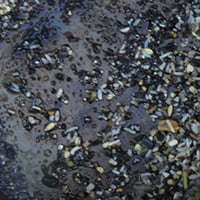The more you know about grit, the more you’ll be able to separate fact from fiction. Let’s get started.
A Closer look at Wastewater Grit
Defining Wastewater Grit
Grit is heavy mineral matter consisting of a variety of particles including sand, gravel, cinder, and other heavy, discrete inorganic materials found in domestic sewage. Grit particle sizes range from 300 micron to as small as 140 micron in size. Other particles smaller than 140 microns are extremely small, naturally buoyant and silt-like, and will not accumulate in the turbulence of a wastewater treatment plant.
Why is Grit a Problem?
Problem grit accumulates in downstream aeration basins, clarifiers, and digesters, creating expensive operation and maintenance hassles. Its abrasion and accumulation scour and plug lines and equipment, accelerating equipment wear. Likewise, it can foul diffusers and membranes. Therefore efficient grit removal is a smart investment in long-term plant optimization and protection.
Specific Gravity & Settling Velocity of Grit
The specific gravity of a solid substance is the ratio of the weight of a given volume of material to the weight of an equal volume of water. In effect, it tells how much heavier (or lighter) the material is than water. The specific gravity relates to a grit particle’s settling velocity, which measures the speed/time it will settle in water. Therefore any particle with a specific gravity greater than 1.0 is heavier than water and will eventually settle in quiescent water.Settling velocity is a basis for most grit removal systems because nearly every system relies on settling and detention time as a means of removal.NOTE: Settling velocities and retention times do not apply to S&L PISTA® hydraulic forced vortex grit chamber.

Actual sample from a Colorado
wastewater treatment plant.

Treatment plant without grit removal
equipment can foul diffusers.
